Blaenavon Industrial Landscape: The area around Blaenavon shows the importance of Wales as the world's major producer of iron and coal in the 19th century. Blaenavon Ironworks started production in 1789. Blaenavon Ironworks was intended to put into practice the latest methods of the Industrial Revolution. Blaenavon Ironworks became one of the largest ironworks in the world. Much of the early ironworks still remain. When the Blaenavon Ironworks opened, it was in an isolated position, so the company set up a shop where the workers could buy food and goods. For a long time it was the only shop in Blaenavon. The surrounding workers' houses dates from the foundation of the Blaenavon Ironworks. The Big Pit is a coal mine. The shaft at Big Pit was sunk to the depth of 200 ft by the Blaenavon Company in 1860. It was deepened in 1880 to its present depth of 300 ft. The Big Pit was closed in 1980. A visit to Big Pit includes an underground guided tour, the guide is a real miner. Blaenavon Industrial Landscape gained the status as a UNESCO World Heritage in 2000. World Heritage Art Industrial Revolution
www.werelderfgoedfotos.nl © Copyright World Heritage Photos
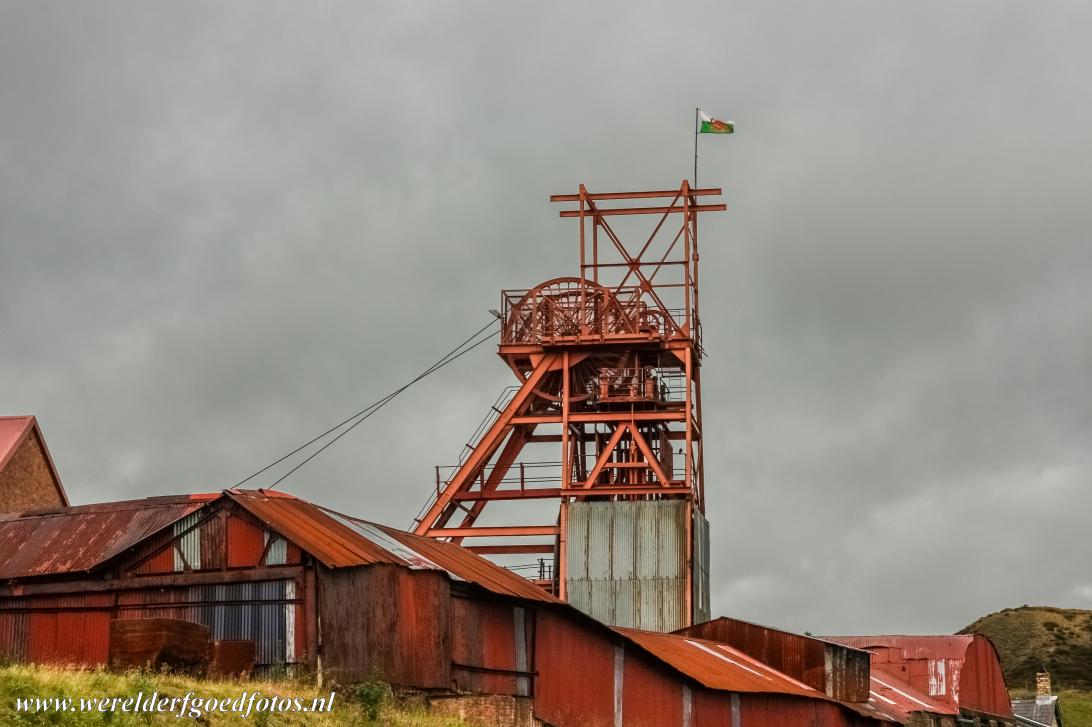
Blaenavon Industrial Landscape: The mine shaft of the Big Pit coal mine in the industrial village of Blaenavon in Wales. The area around the small village of Blaenavon shows the importance of Wales as the world's major producer of iron and coal in the 19th century. Blaenavon Industrial Landscape gained the status as a UNESCO World Heritage in 2000.

Blaenavon Industrial Landscape: The mine shaft of the Big Pit coal mine in the industrial village of Blaenavon in Wales. The area around the small village of Blaenavon shows the importance of Wales as the world's major producer of iron and coal in the 19th century. Blaenavon Industrial Landscape gained the status as a UNESCO World Heritage in 2000.
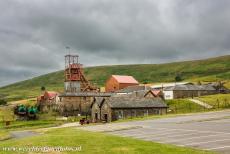
Blaenavon Industrial Landscape: The Big Pit is a coal mine in Wales. The shaft at the Big Pit was sunk to the depth of 61 metres by the Blaenavon Company in 1860 and it was deepened in 1880 to its present depth of 91 metres. The Big Pit was a massive employer in Blaenavon, about 1,300 men worked at the coal mine during the 1920s. The Big Pit was finally closed in 1980.
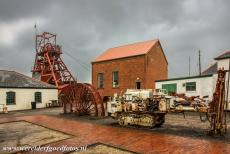
Blaenavon Industrial Landscape: The Big Pit mine shaft. In its heyday, the Big Pit coal mine was the largest employer in Blaenavon, the coal mine was closed down in 1980, hundreds of people lost their job. After closing, the coal mine became the National Coal Mining Museum of Wales. The Big Pit coal mine was opened to the public in 1983.
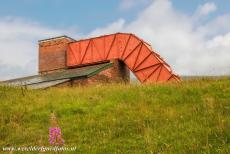
Blaenavon Industrial Landscape: The gigantic air intake of the Big Pit coal mine. Giant fans were used to provide fresh air into the Big Pit caol mine and to pull stale air and gas out of the mine. The blades of the fans measured three metres in diameter, the gigantic fans were driven by an electric motor. The electric motor is still situated in the engine house.
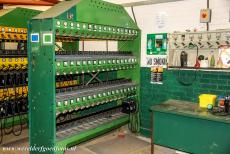
Blaenavon Industrial Landscape: The modern lamp room of the Big Pit coal mine. The mine had a safety check. Each miner was given an identification number, this number was stamped on his lamp. This number corresponded with the number on the lamp rack. After each working day, all the lamps were checked if every miner was back at ground level.
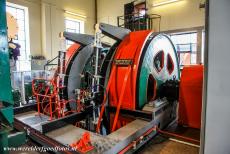
Blaenavon Industrial Landscape: The winding engine inside the winding engine house of the Big Pit coal mine. The winder engine raised and lowered the cages carrying coal, materials and also the miners up and down the Big Pit mine shaft. Now, the winder engine, known as 'The Winder', lowers and raises the cages carrying visitors.
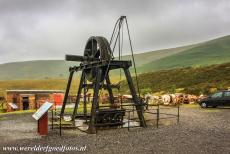
Blaenavon Industrial Landscape: The Big Pit, a 19th century coal mine winding tower. This water powered winding-wheel was called a 'water balance'. At the time, there were numerous winding techniques, powered by human or horse power, and later by steam or water power. Blaenavon Industrial Landscape was declared a UNESCO World Heritage in 2000.
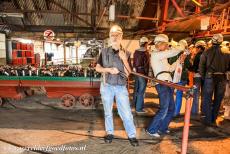
Blaenavon Industrial Landscape: Prepare to be lowered 90 metres down the Big Pit mine shaft. Visitors wear the same equipment used by the miners: helmet, belt, cap lamp and battery. The guided underground tour last about 50 minutes. The guides are all former coal miners with an great experience of working underground.
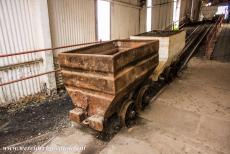
Blaenavon Industrial Landscape: A coal wagon, used in the Big Pit mine to transport coal to the surface. Because all the guides are former miners, they can tell visitors first hand stories about working in a real coal mine in the 20th century and the process of distracting the coal from the ground. Coal is often called the 'Black Gold'.
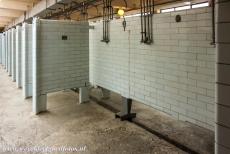
Blaenavon Industrial Landscape: The Pithead Baths. During the mid-twentieth century, several improvements were made to the Big Pit. Most important was the building of the Pithead Baths in 1939. Before the introduction of these baths, miners would have to walk home wet and dirty, risking pneumonia and illness.
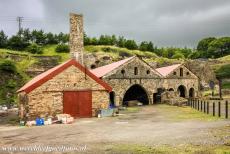
Blaenavon Industrial Landscape: The blast furnace complex of the Blaenavon Ironworks. The Blaenavon Ironworks started operation in 1789 and is the most complete blast furnace complex of its period and type anywhere in the world. The Blaenavon Ironworks was intended to put into practice the latest methods of the Industrial Revolution.
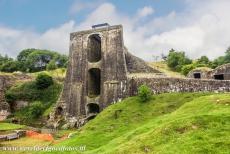
Blaenavon Industrial Landscape: The prominent water-balance lift of the Blaenavon Ironworks. The Blaenavon Ironworks became one of the largest ironworks in the world. Much of the early works still remains. Four of the furnaces can be seen, together with the associated cast houses and the water-balance lift.
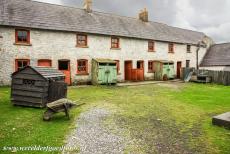
Blaenavon Industrial Landscape: The workers' houses near the Blaenavon Ironworks. The small houses are dating from around the foundation of the Blaenavon Ironworks in 1789. The houses were built by the owners of the Blaenavon Ironworks to attract workers from all over Britain and Ireland.
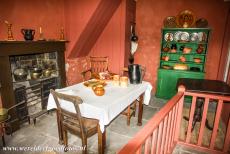
Blaenavon Industrial Landscape: Inside a workers house. The workers houses are all furnished and decorated to show how the workers and families lived. One house is furnished to show how a working-class family lived in 1790, two other houses show how a working-class familie lived in the 19th century and in the 20th century.
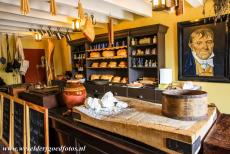
Blaenavon Industrial Landscape: Blaenavon Ironworks was situated on an isolated position, so the company set up a shop where the workers could buy food and goods. For a long time it was the only shop in Blaenavon. Although the shop started as a service for the workers, it was also profitable for the owners of the company. There were many complains about the high prices of goods in the company shop, some goods might cost 50 % more than in ordinary shops.
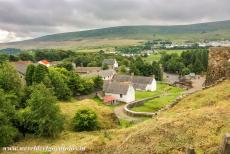
Blaenavon Industrial Landscape: The workers' houses nearby the Blaenavon Ironworks, viewed from the water-balance lift. The Blaenavon Ironworks is one of the most important monuments to have survived from the early part of the Industrial Revolution in Britain. Blaenavon Industrial Landscape is situated in the south of Wales.
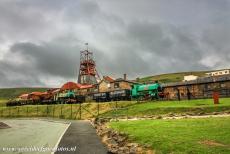
The Blaenavon Industrial Landscape is situated along the European Route of Industrial Heritage (ERIH), a large network of routes along the most important industrial sites in Europe. This route was designed to lead visitors along the industrial highlights of Europe. The Blaenavon Industrial Landscape was inscribed on the UNESCO World Heritage List in 2000.
